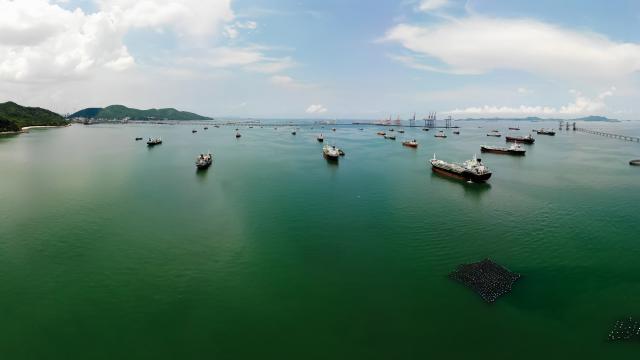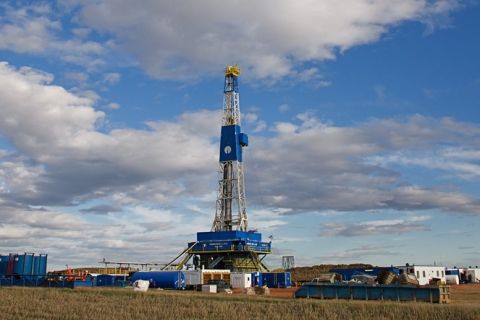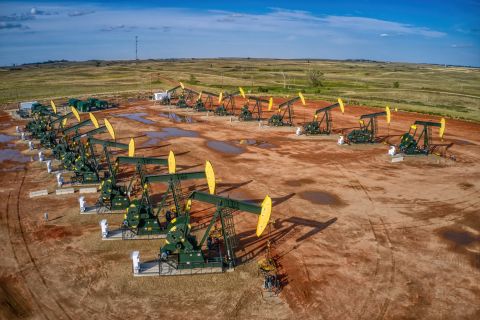
Tankers wait at the Port of Singapore. U.S. crude oil exports have promising prospects, says Morningstar, especially with arbitrage opportunities to Europe and Asia. (Source: Shutterstock)
How have U.S. crude exports fared in the years since the ’70s ban was lifted at year-end 2015?
One must jump forward to 2017 to gauge significant progress, since the industry downturn muffled the export response until then. Now, however, with crude prices higher and some time for international market conditions to develop more favorably, U.S. producers are moving more barrels overseas, and not just to Canada—the initial focal point—but also to Asia and Europe.
Morningstar Commodities Research recently released a comprehensive report on how the crude export market has developed in the U.S. and what the industry can look forward to in the coming years.
Overall, prospects look fairly robust, although infrastructure—particularly facilities to load VLCC cargoes (2 million-barrel capacity) from docks in Corpus Christi and the Houston region—is needed, as well as a continuing supportive price environment driven by demand and other factors.
Exports averaged 1.7 million barrels per day (MMbbl/d) between Dec. 31, 2017, and May 11. “That is double the 0.8 MMbbl/d average over the same period in 2017,” said the report. “A new weekly record of 2.6 MMbbl/d was set during the week ended May 11.”
Crude prices have obliged of late. U.S. exporters need a premium between WTI crude and Brent to make shipments economic and the report pegs the necessary Brent premium at $3/bbl or more.
From February to about May of this year, “the Brent premium over WTI has averaged $4.65/bbl and the Dubai premium over WTI has averaged $1.55/bbl,” the researchers wrote, “keeping the arbitrage windows open for export cargoes to Europe and Asia.”
In fact, with the takeaway crunch in the Permian discounting Cushing by about $1.71/bbl, “Brent prices are in effect $6.37 above WTI at the wellhead—further encouraging export sales,” the report said.
Production has kept pace as U.S. operators ramped up quickly and pushed the rig count to more than 1,000. From February to May, production rose to 10.7 MMbbl/d. Further, “the OPEC agreement to cut supplies continues to be successful,” according to the report, “and the crude market outside the U.S. is tight, providing demand for U.S. exports.”
Prices and production targets may be falling into line for exports, but what about the infrastructure needed on the Gulf Coast? VLCC capacity is critical to carry the size of cargoes that are economic to compete worldwide.
At present, the LOOP terminal is the only Gulf Coast terminal able to handle a fully laden VLCC, and Morningstar notes it is currently primarily used for imports. Others are in the works: The Port of Corpus Christi, Buckeye, and Jupiter MLP have announced plans for VLCC-capable facilities, and Enterprise Products Partners is testing a VLCC vessel at its Texas City dock near Houston, according to the report.
For U.S. crude exports to continue to develop, Morningstar said necessary ingredients include continued WTI discount pricing to Brent; international market demand driven by factors such as the OPEC agreement, sanctions on Iranian exports and more; trade negotiations with China that could drive crude exports; continued production growth; and perhaps most critical, the infrastructure buildout for VLCCs. The authors also cite the need for a “transparent U.S. export crude price market underpinned by a future contract.”
Recommended Reading
Williston Warriors: Enerplus’ Long Bakken Run Ends in $4B Chord Deal
2024-02-22 - Chord Energy and Enerplus are combining to create an $11 billion Williston Basin operator. The deal ends a long run in the Bakken for Enerplus, which bet on the emerging horizontal shale play in Montana nearly two decades ago.
Report: Devon Energy Targeting Bakken E&P Enerplus for Acquisition
2024-02-08 - The acquisition of Enerplus by Devon would more than double the company’s third-quarter 2023 Williston Basin production.
Chord Buying Enerplus to Create a Bakken Behemoth
2024-02-22 - Chord Energy said Feb. 21 it will acquire Enerplus Corp. for nearly $4 billion in a stock-and-cash deal to potentially create the largest producer in the Williston Basin.
Chord, Enerplus’ $4B Deal Clears Antitrust Hurdle Amid FTC Scrutiny
2024-04-08 - Chord Energy and Enerplus Corp.’s $4 billion deal is moving forward as deals by Chesapeake, Exxon Mobil and Chevron experience delays from the Federal Trade Commission’s requests for more information.
Is Grayson Mill the Next Bakken Domino to Fall After Chevron-Hess?
2024-01-31 - As E&Ps look to bulk up outside of the Permian Basin, EnCap-backed Bakken player Grayson Mill Energy is reportedly exploring a sale valued around $5 billion.






